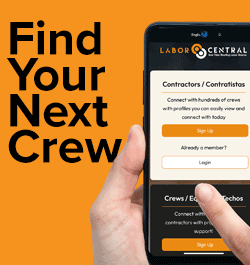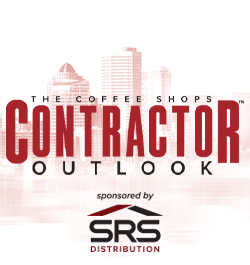Best practices for hiring, onboarding and managing subcontractors in roofing projects
April 25, 2025 at 8:30 a.m.RCS Influencer John Kenney says subcontractor management is about building long-term, high-trust partnerships.
Safety, quality and consistency in roofing projects are only as strong as the subcontractors you bring onto the job. As a roofing industry expert, I’ve seen how critical it is to move beyond just hiring on price. Establishing a structured, well-documented approach to hiring, onboarding and managing subcontractors reduces risk, improves project outcomes and strengthens your reputation in the market.
The process begins with thorough prequalification. Contractors should vet subcontractors for technical capabilities, safety records, licensing, financial stability and references. Review OSHA logs, EMR ratings and past litigation or insurance claims. For example, one commercial roofing contractor reduced warranty callbacks by 40% after using a formal scorecard that tracked subcontractor safety, responsiveness and craftsmanship over multiple projects.
After prequalification, the bidding process should focus on value, not just cost. Low bids often result in poor workmanship, change orders or schedule delays. Instead, evaluate whether the subcontractor understands the scope, timeline and quality expectations. A clear proposal that includes staffing plans, materials sourcing and quality control procedures will likely yield a reliable partner.
Once a subcontractor is selected, onboarding should be detailed and contract-driven. All expectations must be documented, including the scope of work, safety responsibilities, required insurance, payment terms, quality standards and timelines. Flow-down clauses from the prime contract and clear indemnification language help protect the contractor from liability. Insurance requirements — general liability, workers’ comp, auto and umbrella policies — should be confirmed before work begins, with the contractor named as additional insured.
A strong safety culture must be established from the start. A site-specific safety plan, pre-job safety meetings and documentation of all required training are required. In metal roofing, for instance, risks tied to sharp edges, slippery panels and fall hazards must be addressed clearly. Daily huddles and hazard analyses should be routine. Designating a trained, on-site safety rep for each subcontractor team improves compliance and reinforces accountability.
Technology can streamline this process significantly. Mobile field apps and subcontractor management platforms allow contractors to track safety documentation, inspection reports, time logs and compliance forms in real-time. This increases visibility and reduces administrative gaps that often lead to disputes or delays.
Ongoing performance management is just as important as onboarding. Assign a point of contact who conducts regular job site walk-throughs and monthly progress meetings. Monitor for quality, schedule adherence, crew behavior and communication. Document any issues and resolve them quickly. Post-project evaluations can help build a preferred subcontractor list and identify gaps in future engagements.
Don’t underestimate the importance of communication and cultural alignment. A technically strong subcontractor can disrupt a project if their team doesn’t match your company’s culture or client expectations. Look for partners who show professionalism, problem-solving ability and a willingness to collaborate — not just those who do the job.
Ultimately, subcontractor management is about building long-term, high-trust partnerships. As labor shortages and project complexity grow, the ability to develop and retain reliable subcontractor teams will become a key differentiator. By investing in robust hiring protocols, thorough onboarding, continuous oversight and performance tracking, roofing contractors can deliver consistent results, reduce risk and maintain the high standards today’s clients demand.
John Kenney is the CEO of Cotney Consulting Group. See his full bio here.






















Comments
Leave a Reply
Have an account? Login to leave a comment!
Sign In